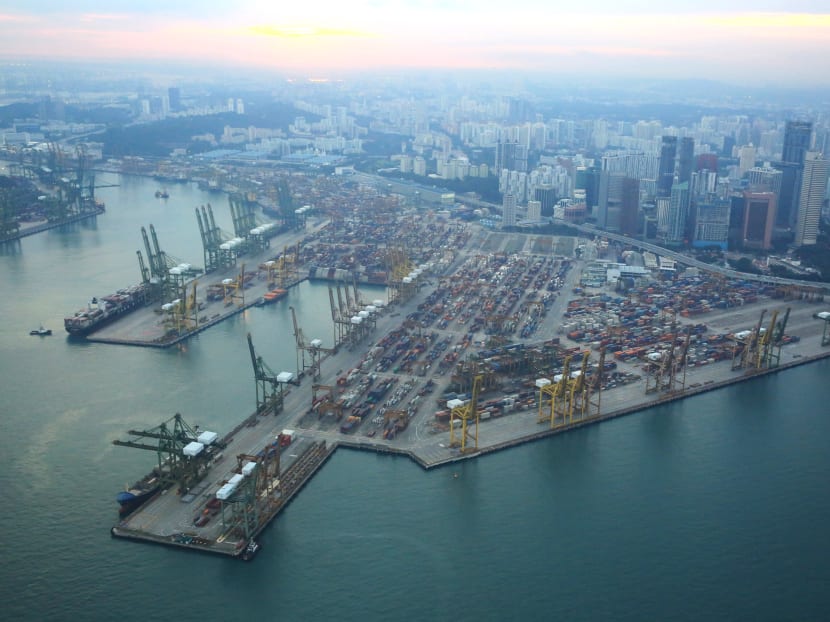To stay ahead, S’pore needs to work with maritime clusters abroad: Advisory committee
SINGAPORE — Amid intensifying competition among both established and emerging international maritime centres (IMCs), Singapore should strengthen cooperation with other maritime clusters overseas, said a high-powered committee tasked to chart the future directions of Singapore as an IMC.
SINGAPORE — Amid intensifying competition among both established and emerging international maritime centres (IMCs), Singapore should strengthen cooperation with other maritime clusters overseas, said a high-powered committee tasked to chart the future directions of Singapore as an IMC.
Possible focus areas could include business linkages between maritime economies, collaboration opportunities regarding research and education, as well as joint development and implementation of new international standards, the IMC 2030 Advisory Committee said in its report released on Friday (Sep 22).
For instance, there can be tie-ups between education and research institutions on areas such as big data and autonomous systems. One example that the Maritime and Port Authority of Singapore (MPA) is already working on is a next-generation Vessel Traffic Management System. Its smart capabilities enables it to predict traffic hotspots and anticipate potential collisions. Features of the system include real-time traffic information, which will assist ship masters to plan routes to avoid congestion. It will also be capable of handling unmanned vessels, which will be able to communicate autonomously through digital systems.
Globally, Singapore is seen as a leading IMC. In 2015, it was ranked as the world’s leading maritime capital by Norwegian consulting firm, Menon Economics.
However, emerging ports in the region are nipping at the Republic’s heels, and new routes could threaten Singapore’s status as a top international port.
The proposed Kra Canal, for instance, will connect the Gulf of Thailand with the Andaman Sea across southern Thailand, and compete directly with ports in the Straits of Malacca, including Singapore.
Smaller ports in Indonesia have also made it possible for large vessels to send goods directly there instead of offloading them at transhipment hubs such as Singapore. Earlier this year, Malaysia’s Port Klang Authority said it wanted to build a giant port at Pulau Carey, to compete with Singapore for a share of the container cargo trade.
The committee, which is headed by BW Group chairman Andreas Sohmen-Pao, highlighted the need for Singapore to work with complementary maritime clusters, among other strategies.
At the same time, in order to remain competitive, “a key differentiator for Singapore will be the ability to create and sustain value propositions that will help to grow and anchor the maritime cluster based here”, said the IMC 2030 Strategic Review report.
Among other recommendations, the report said that Singapore needs to establish itself as a leader in port and risk management.
To achieve that, it should continue to shape “global port management best practices”, and leverage the pool of leading ship brokers and banks here to strengthen the role it plays in risk management.
The committee suggested that the MPA and the Singapore Exchange, along with other stakeholders such as the Monetary Authority of Singapore and the Singapore Shipping Association, form a working group to develop opportunities in this area.
The committee’s report noted that trade’s multiplier effect on countries’ economic growth has fallen sharply over the last two decades. Nevertheless, global seaborne trade is expected to grow as emerging economies continue to rely on trade for
economic development. Trade growth in the longer term will also be boosted by the rise of e-commerce and e-payments, as well as the digitalisation of logistics which would enable more small and medium enterprises to to engage in international trade.
Globally, the trade-to-GDP (growth domestic product) growth multiplier has tumbled from an average of 2.62 between 1990 and 1995, to 1.01 between 2010 and 2015.
“This is attributable to the gradual shift towards non-tradable services in many economies and the maturation of global supply chains,” said the report. Meanwhile, seaborne trade around the world has grown from almost three times between 1985 and 2015, to reach 10,033 million metric tonnes loaded.







